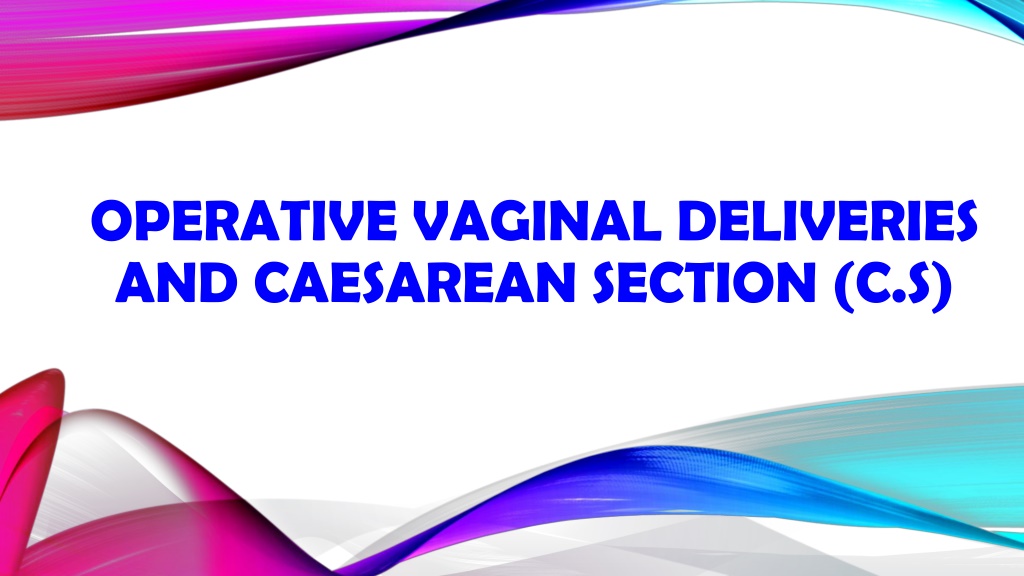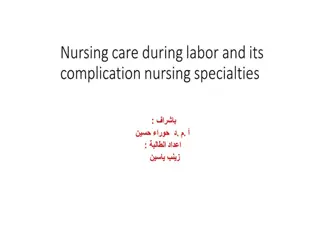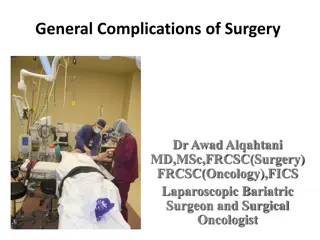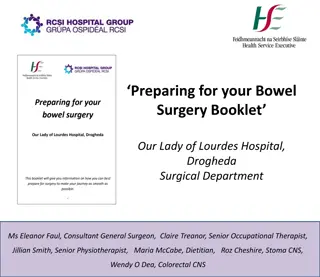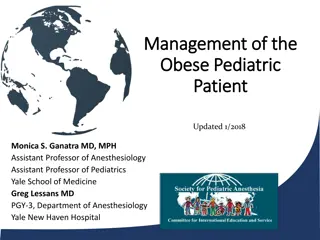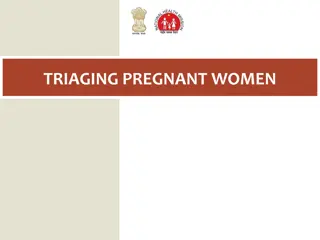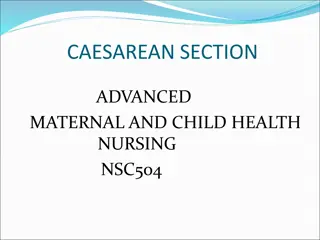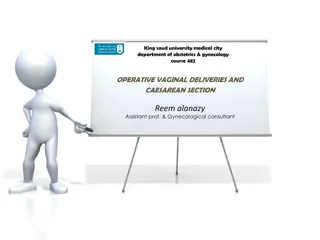Overview of Operative Vaginal Deliveries and Caesarean Section
Operative vaginal deliveries involve using instruments like forceps or vacuum for delivery, with indications including maternal/fetal distress. Pre-requisites for forceps/ventouse include full cervical dilation. Caesarean sections have a 25% rate with potential complications. Various methods are used for different types of C/S incisions. Complications may arise, such as bleeding and organ injuries. A trial of instrumental delivery should be done in the OR with necessary medical teams present.
Download Presentation

Please find below an Image/Link to download the presentation.
The content on the website is provided AS IS for your information and personal use only. It may not be sold, licensed, or shared on other websites without obtaining consent from the author. Download presentation by click this link. If you encounter any issues during the download, it is possible that the publisher has removed the file from their server.
E N D
Presentation Transcript
OPERATIVE VAGINAL DELIVERIES AND CAESAREAN SECTION (C.S)
DEFINITION It is the delivery of the fetus using an instrument through the vaginal route. Instruments could be : Forceps Vacuum Incidence of operative deliveries is 3.5 % Indications of operative delivery MATERNAL FETAL 1. Prolonged or arrested 2ndstage 2. Poor maternal effort 3. Maternal cardiac disease 4. Patients with retinal detachment or post op for similar ocular conditions 1. Fetal distress 2. Prematurity (Forceps only) 3. Certain malpositions
PRE-REQUISITE FOR FORCEPS AND VENTOUSE 1. Cervix has to be fully dilated 2. Membranes ruptured 3. Head has to be engaged 4. Vertex presentation 5. Head position known (forceps can be applied on the head for cephalic presentation or after coming head for breech presentation) Ventouse can only be applied on the head. Conditions to be fulfilled 1. Adequate analgesia 2. Empty bladder 3. Adequate episiotomy
COMPLICATIONS OF INSTRUMENTAL DELIVERIES MATERNAL FETAL Genital tract lacerations, Cx, vagina, Hemorrhage Extensions of episiotomy Sphincter lacerations Fecal and flatus incontinence or injury to rectal mucosa Skull fractures Cephalohematoma Caput succedaneum Facial Palsy Scalp laceration Intracranial haemorrhage Infant death
TRIAL OF INSTRUMENTAL DELIVERY Should be performed in O.R. with anesthetist present + pediatrician to resuscitate. All teams ready to proceed to C.S. in case failed instrumental delivery
CAESAREAN SECTION Rate : 25% Maternal mortality 5 6 per 100,000 C/S Perinatal mortality 3/1000 USA 7/1000 U.K C. S. Could be: I. Elective C/S Planned and timed II. Emergency C/S Unplanned during labor or before the onset of labour
DIFFERENT METHODS OF PERFORMING DIFFERENT TYPES OF C/S SKIN INCISION UTERINE INCISION a. Low transverse a. Upper Segment (Classical) transverse vertical b. Midline b. Lower segment - transverse - vertical
COMPLICATIONS OF UPPER SEGMENT C/S 1. Bleeding 2. Organ injury Bowel Bladder Ureter 3. Adhesions formation 4. Rupture scar in future pregnancy higher than lower segment scar 5. More difficult to repair
COMPLICATIONS OF LOWER SEGMENT 1. 2. Extension of incision lateral Haemorrhage downwards bladder Bowel Ureter 3. Organ injury 4. Rupture scar 5. Abnormal placentation in future pregnancy Low lying placenta Accreta, increta, perceta 6. Adhesions specially bladder
COMMON POST OP COMPLICATIONS 1. Atelectasis 2. Infection Endometritis Wound UTI Pneumonia 3. DVT & PE
WHEN CAN A TRIAL OF LABOUR BE OFFERED AFTER C.S. 1. VBAC can be offered for non recurrent indications e.g., fetal distress, cord prolapse, placental abruption, breech presentation. 2. Pelvic adequacy is confirmed by proper clinical radiological methods as needed. 3. Lower Segment scar 4. Placental localization 5. Scar integrity is assured by taking proper post op history 6. Standard of care is to offer VBAC after one previous C/S and not multiple 7. Safe set up: Tertiary care center which can perform emergency C.S as needed. 8. Patients approval
MEASURES TO REDUCE C.S. RATE Proper antenatal care For early detection and management of conditions that lead to C.S. rate e.g. controlling macrosomia in diabetes early detection of HTN. Post term ect. Performing ECV for breeches. Prevent infections: Prophylactic Ab + Aseptic technique Prevention of anemia To prevent DVT. : TEDS stocking Thromboprophylaxis Early ambulation
POST CARE 1. VS hourly x 4 hours 2. I.V. fluids 3. Analgesia 4. Checking Fundus + Lochia 5. Urine output + catheter care 6. Wound care 7. Early ambulation 8. Antibiotics 9. Thromboprohylaxis 10.Breast care and breast feeding
